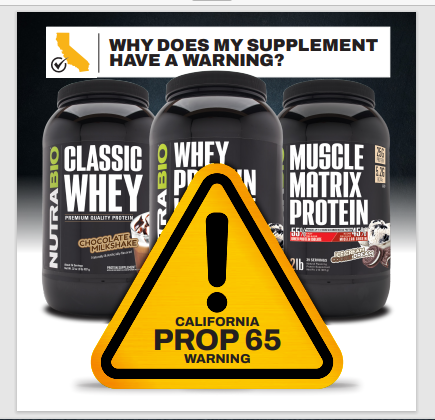Taurine: Doesn't It Come From Bull Semen?

Thanks to Red Bull’s popularity surge of the 1990’s, much of the world is aware of its namesake ingredient, Taurine. Along with the popularity came stories regarding the origin of Taurine. Is it actually from bull semen?
Where Taurine Really Comes From
Taurine is a pseudo-amino acid that contains Sulphur and a Nitrogen group, but lacks an acid group, it can’t be an acid. In fact, it was first identified as a component of a biological fluid from bulls, but the fluid in question is bile, not semen. Supplemental taurine nowadays, luckily, is manufactured from amino acids, cysteine and methionine. Not that it would be all that weird… ancient cultures such as the Romans used to eat bull testicles for vitality.
The Benefits of Taurine Supplementation
Benefit #1: Taurine Increases Insulin Sensitivity & Lowers Blood Lipids

Personally, I’ll stick to the taurine powders and ribeye steaks. Why supplement with taurine, though? Well we’ve already covered one reason – bile. Taurine is a component of bile acids, an enzymatic fluid released into the intestines to help us digest our food. One taurine-containing bile acid, tauroursodeoxycholic acid, dramatically improves liver health [1], increases insulin sensitivity [2], and lowers blood lipids [3]. This is not to mention that having happy intestines helps make a happy athlete!
Benefit #2: Taurine Reduces Muscle Breakdown & Lactic Acid

One of the more renowned reasons for taurine supplementation is for its role in muscle health. Taurine composes over 50% of free amines in cardiac muscle [4], and a lack of taurine in skeletal muscle compromises their ability to function by nearly 80% [Taurine transporter knockout depletes muscle taurine levels and results in severe skeletal muscle impairment but leaves cardiac function uncompromised].
Supplementation with taurine reduces muscle breakdown, lactic acid, and cholesterol [5-6]. Reduction of cholesterol is hypothesized to have indirect effects that may enhance metabolic function during exercise. Taurine supplementation has also been noted to reduce the subjective difficulty of exercise, prevent DNA damage, decrease muscle swelling, and lessen muscle damage in the presence of branched-chain amino acids following muscle damaging exercise [7]. Many of taurine’s effects are mediated by its function as a powerful antioxidant [8-9]. This is all well and good, but what about performance?! A number of studies have now observed taurine supplementation to enhance endurance exercise performance, firmly validating its potential to enhance performance [10-12].
Benefit #3: Taurine Promotes The Formation Of New Blood Vessels

A more interesting effect of taurine is a process called angiogenesis, or the formation of new blood vessels. The delivery of blood (really oxygen, amino acids, minerals, and other nutrients) to working muscles can come only via our vasculature. One of the early adaptations to exercise is angiogenesis, particularly in our capillary beds, where most muscle-circulatory nutrient exchanges occur [13]. Taurine activates a number of pathways and growth factors to facilitate angiogenesis [14]. Greater capacity for nutrient delivery means greater capacity for exercise!
Ready To Give Taurine A Try?
EndurElite strives to offer the best supplements science has to offer. Our pre-workout, PerformElite, is no exception, and this is why it includes 1,500 milligrams of taurine. Taurine’s effects on muscle metabolism and oxidative stress are a perfect complement to PerformElite’s other ingredients. Read about PerformElite here, and about some of its other ingredients on our blog.
References:
- Panella, C., Ierardi, E., De Marco, M. F., Barone, M., Guglielmi, F. W., Polimeno, L., & Francavilla, A. (1995). Does tauroursodeoxycholic acid (TUDCA) treatment increase hepatocyte proliferation in patients with chronic liver disease?. The Italian journal of gastroenterology, 27(5), 256-258.
- Kars, M., Yang, L., Gregor, M. F., Mohammed, B. S., Pietka, T. A., Finck, B. N., ... & Klein, S. (2010). Tauroursodeoxycholic acid may improve liver and muscle but not adipose tissue insulin sensitivity in obese men and women. Diabetes, 59(8), 1899-1905.
- Crosignani, A., Battezzati, P. M., Setchell, K. D., Invernizzi, P., Covini, G., Zuin, M., & Podda, M. (1996). Tauroursodeoxycholic acid for treatment of primary biliary cirrhosis. Digestive diseases and sciences, 41(4), 809-815.
- Jacobsen, J. G., & Smith Jr, L. H. (1968). Biochemistry and physiology of taurine and taurine derivatives. Physiological Reviews, 48, 424-511.
- Yatabe, Y., Miyakawa, S., Ohmori, H., & Adachi, H. M. T. (2009). Effects of taurine administration on exercise. In Taurine 7(pp. 245-252). Springer, New York, NY.
- Ra, S. G., Miyazaki, T., Ishikura, K., Nagayama, H., Komine, S., Nakata, Y., ... & Ohmori, H. (2013). Combined effect of branched-chain amino acids and taurine supplementation on delayed onset muscle soreness and muscle damage in high-intensity eccentric exercise. Journal of the International Society of Sports Nutrition, 10(1), 51.
- Dawson Jr, R., Biasetti, M., Messina, S., & Dominy, J. (2002). The cytoprotective role of taurine in exercise-induced muscle injury. Amino acids, 22(4), 309-324.
- Silva, L. A., Silveira, P. C., Ronsani, M. M., Souza, P. S., Scheffer, D., Vieira, L. C., ... & Pinho, R. A. (2011). Taurine supplementation decreases oxidative stress in skeletal muscle after eccentric exercise. Cell biochemistry and function, 29(1), 43-49.
- Yatabe, Y., Miyakawa, S., Miyazaki, T., Matsuzaki, Y., & Ochiai, N. (2003). Effects of taurine administration in rat skeletal muscles on exercise. Journal of orthopaedic science, 8(3), 415-419.
- Dawson Jr, R., Biasetti, M., Messina, S., & Dominy, J. (2002). The cytoprotective role of taurine in exercise-induced muscle injury. Amino acids, 22(4), 309-324.
- Geiss, K. R., Jester, I., Falke, W., Hamm, M., & Waag, K. L. (1994). The effect of a taurine-containing drink on performance in 10 endurance-athletes. Amino Acids, 7(1), 45-56.
- Bloor, C. M. (2005). Angiogenesis during exercise and training. Angiogenesis, 8(3), 263-271.
- Baek, Y. Y., Cho, D. H., Choe, J., Lee, H., Jeoung, D., Ha, K. S., ... & Kim, Y. M. (2012). Extracellular taurine induces angiogenesis by activating ERK-, Akt-, and FAK-dependent signal pathways. European journal of pharmacology, 674(2), 188-199.


